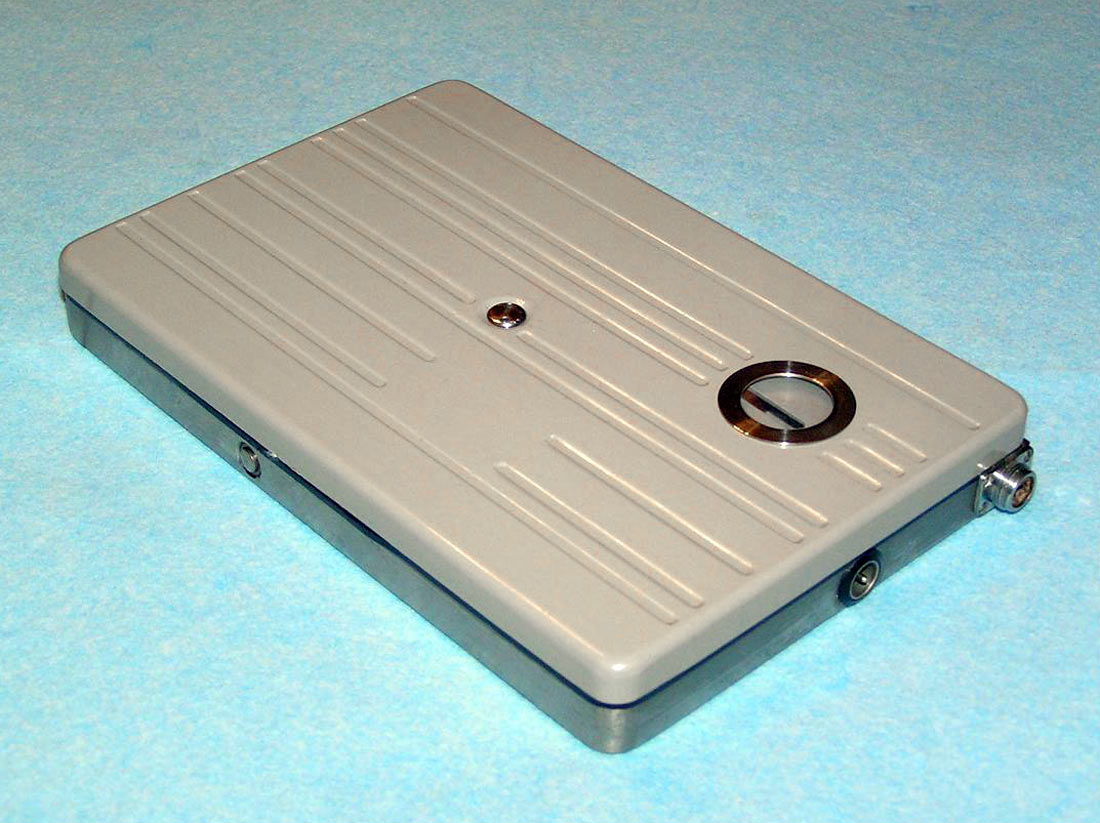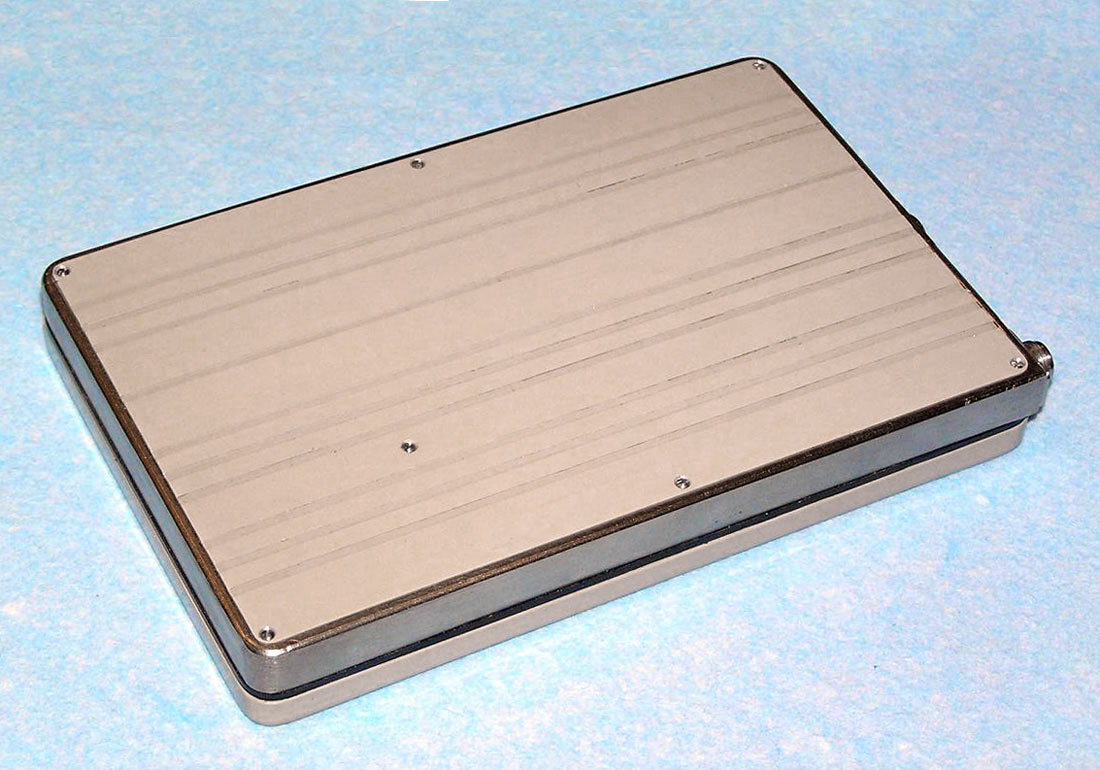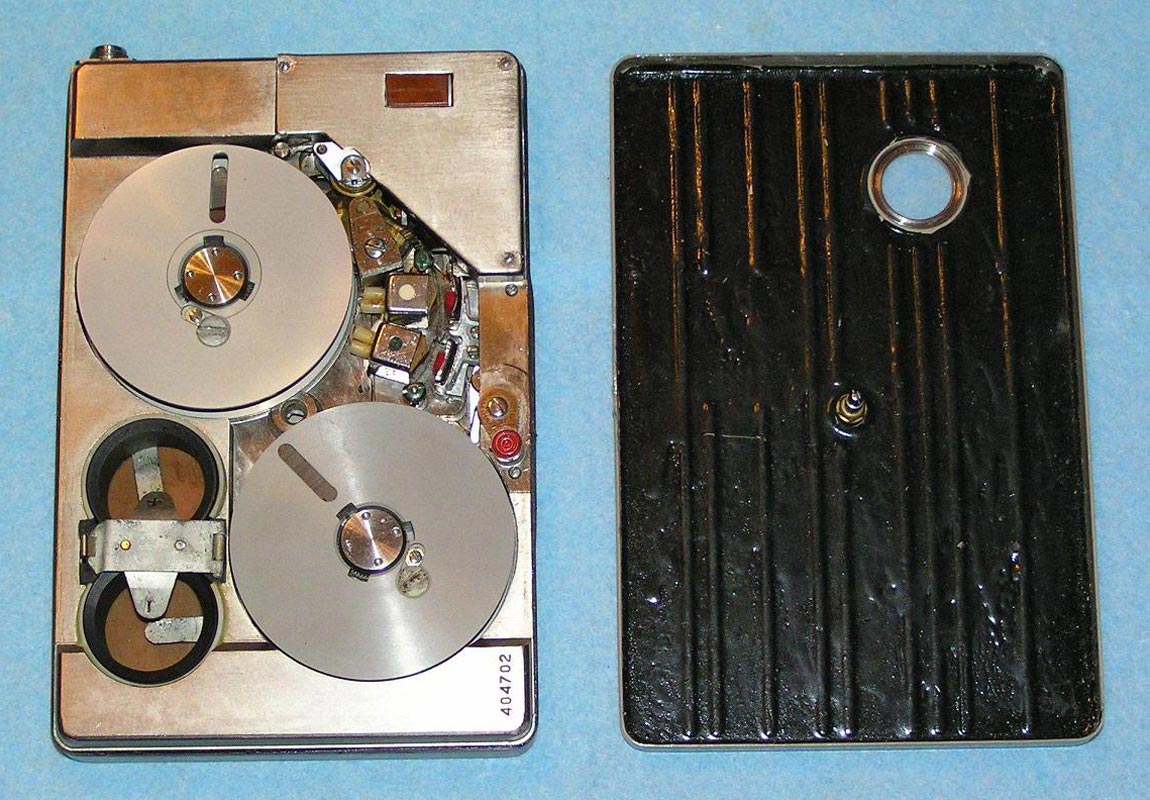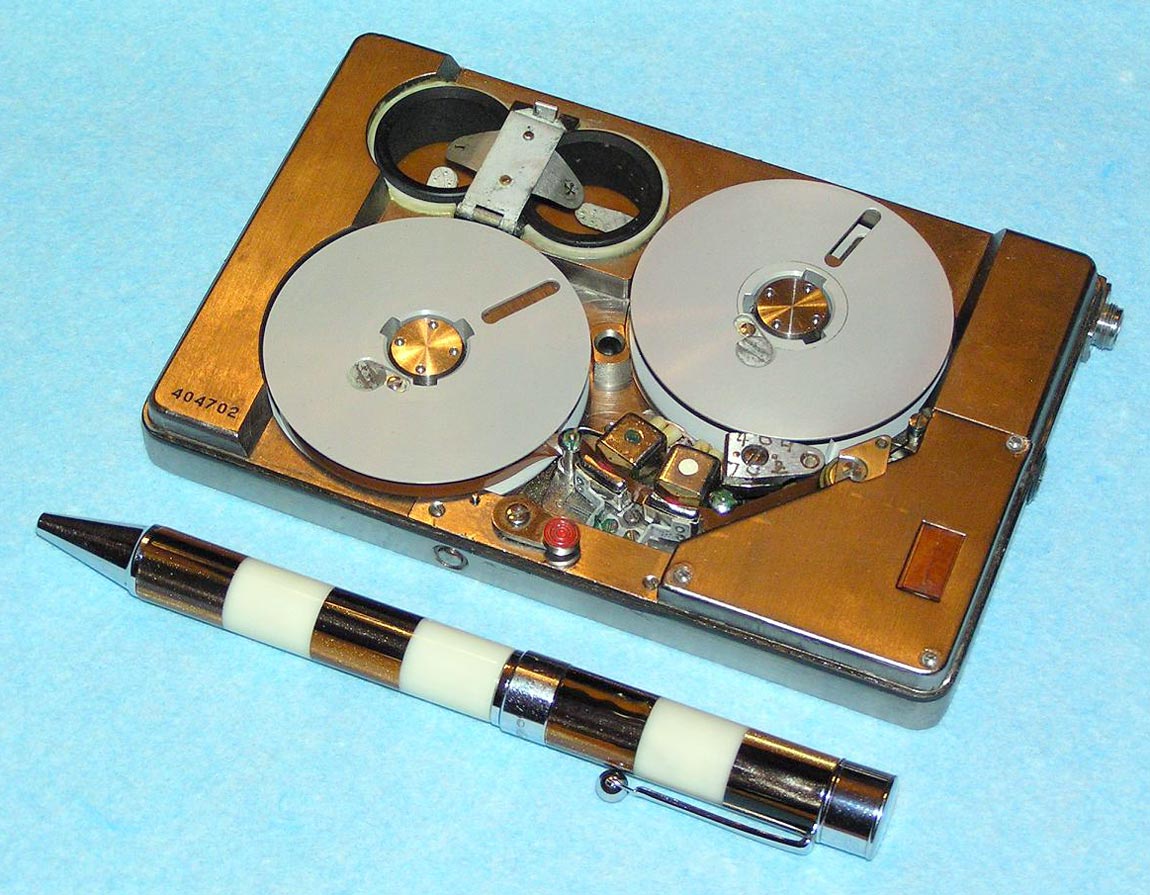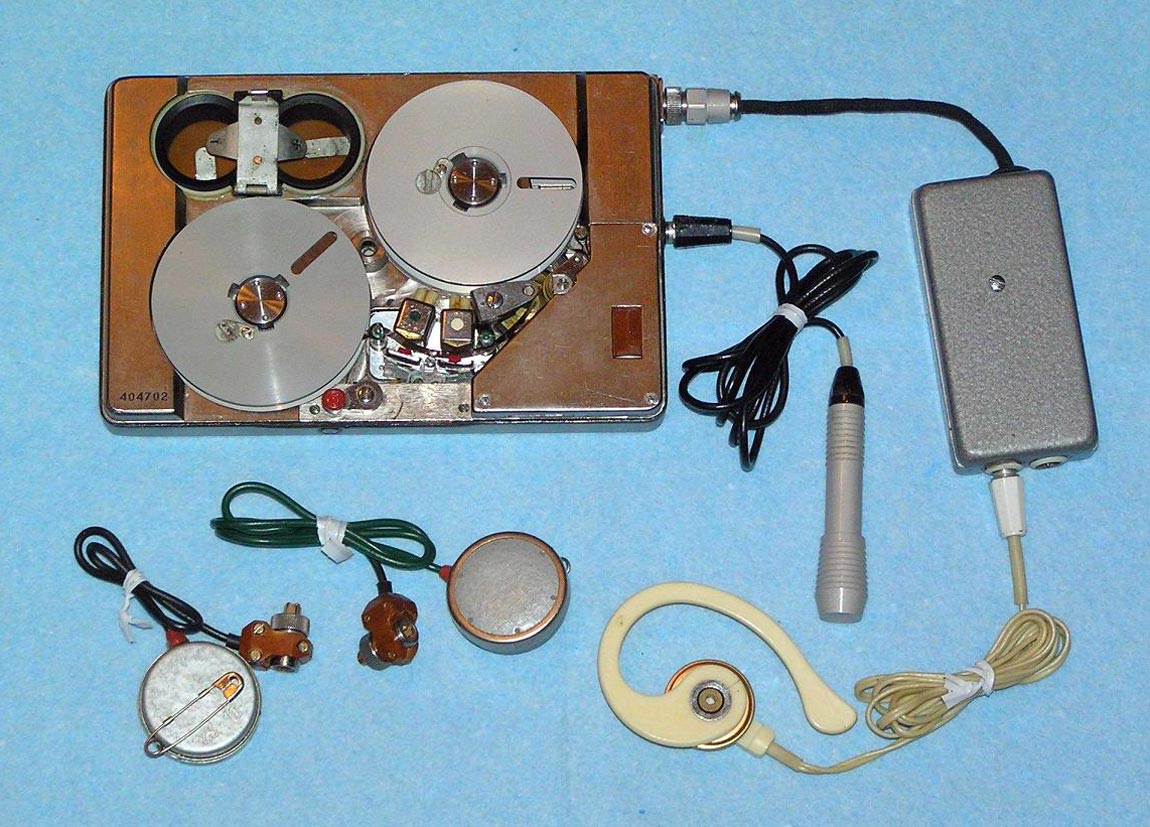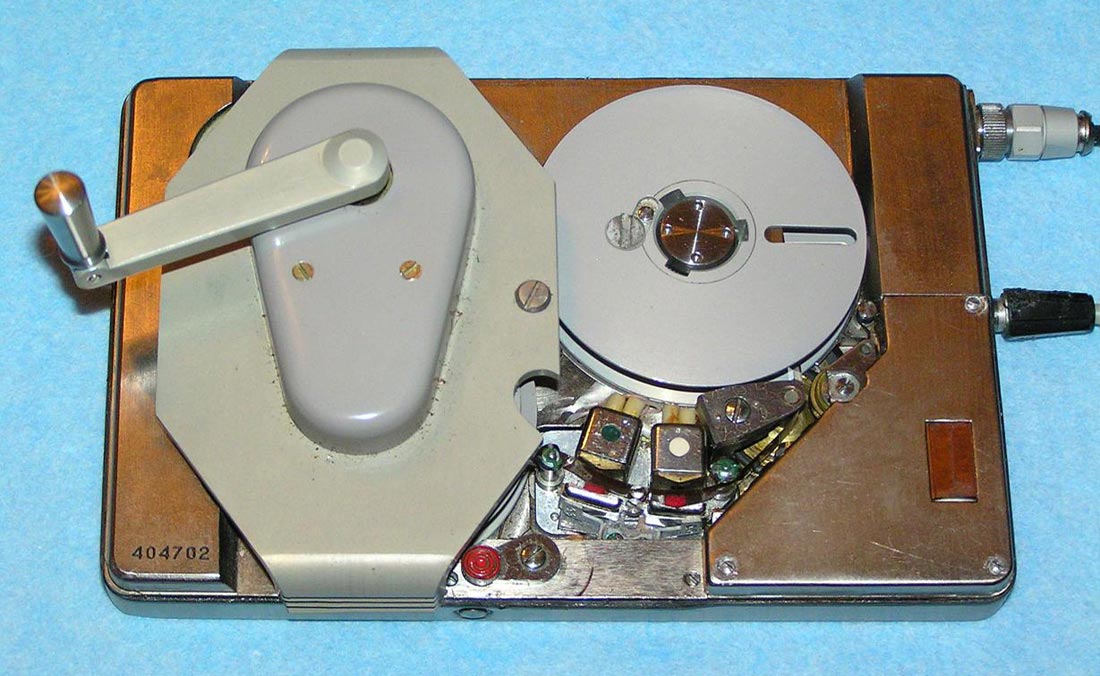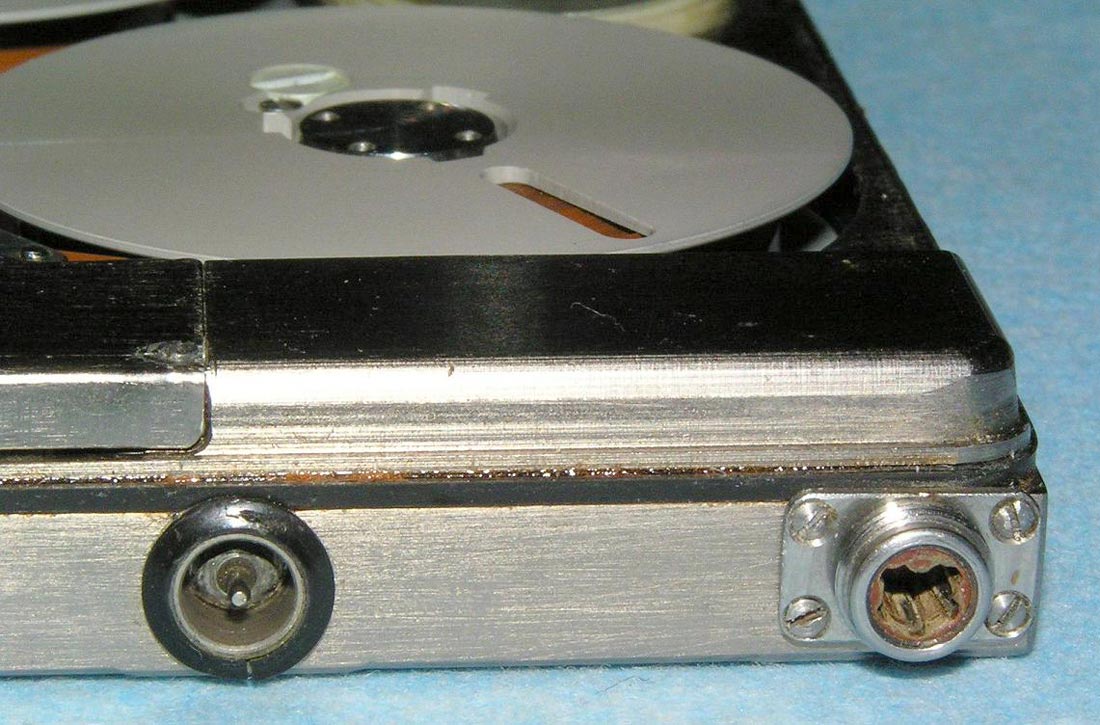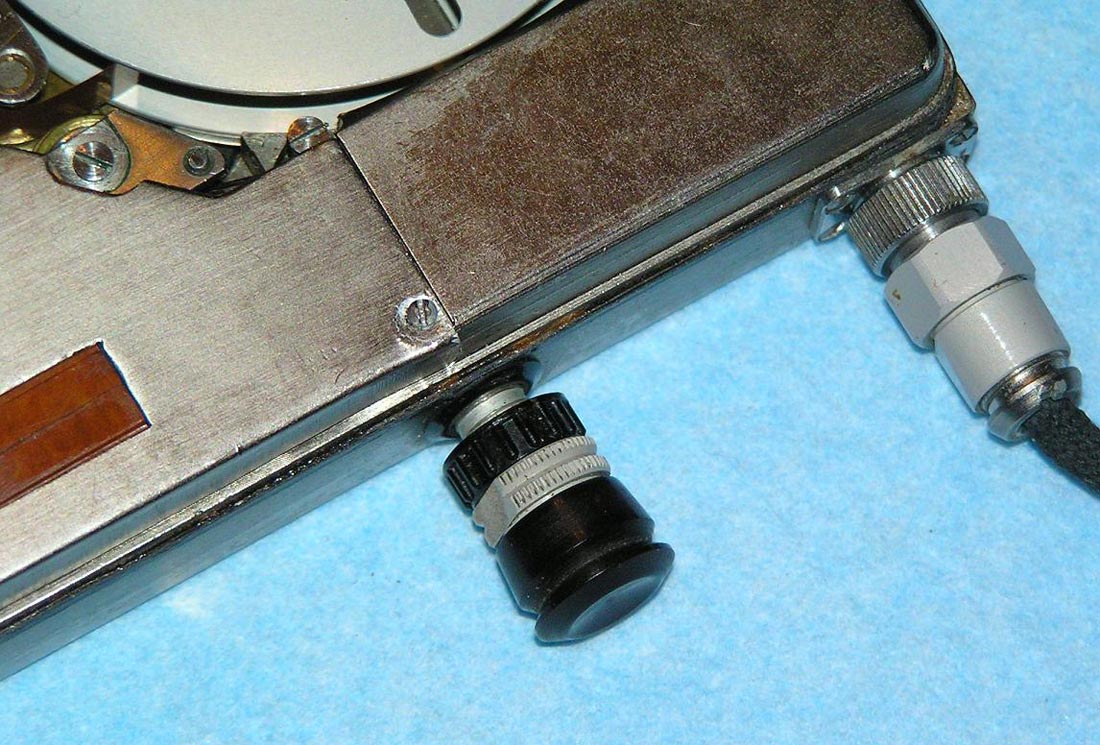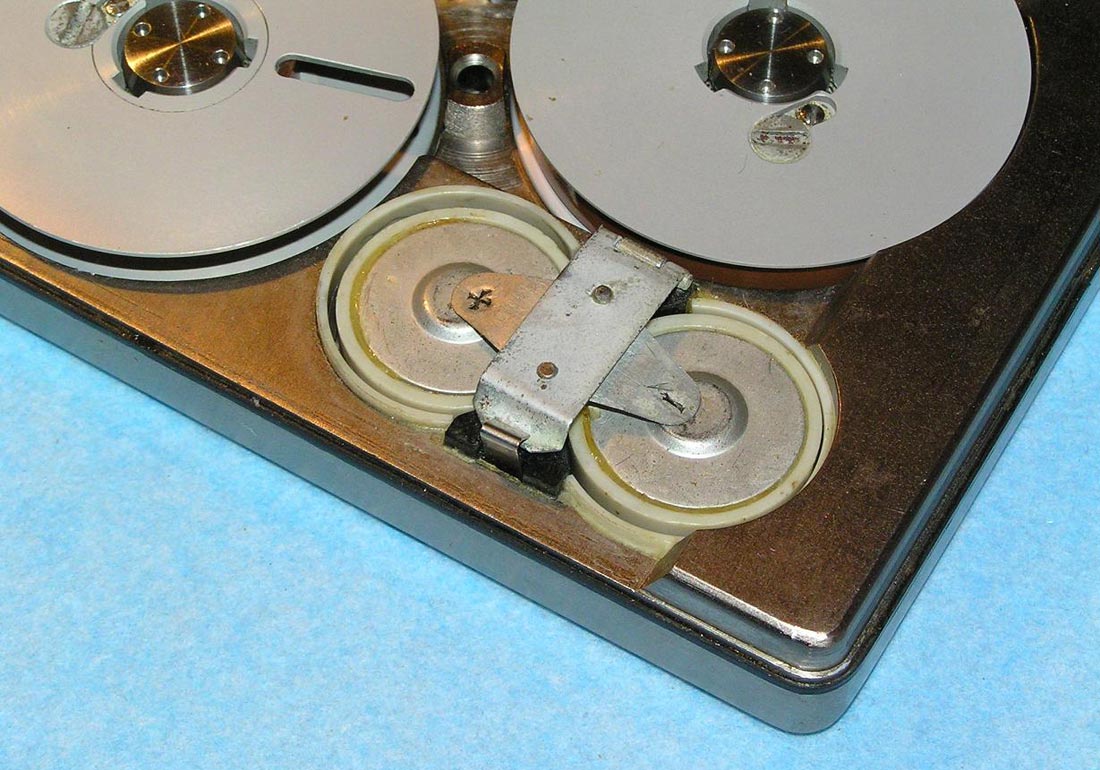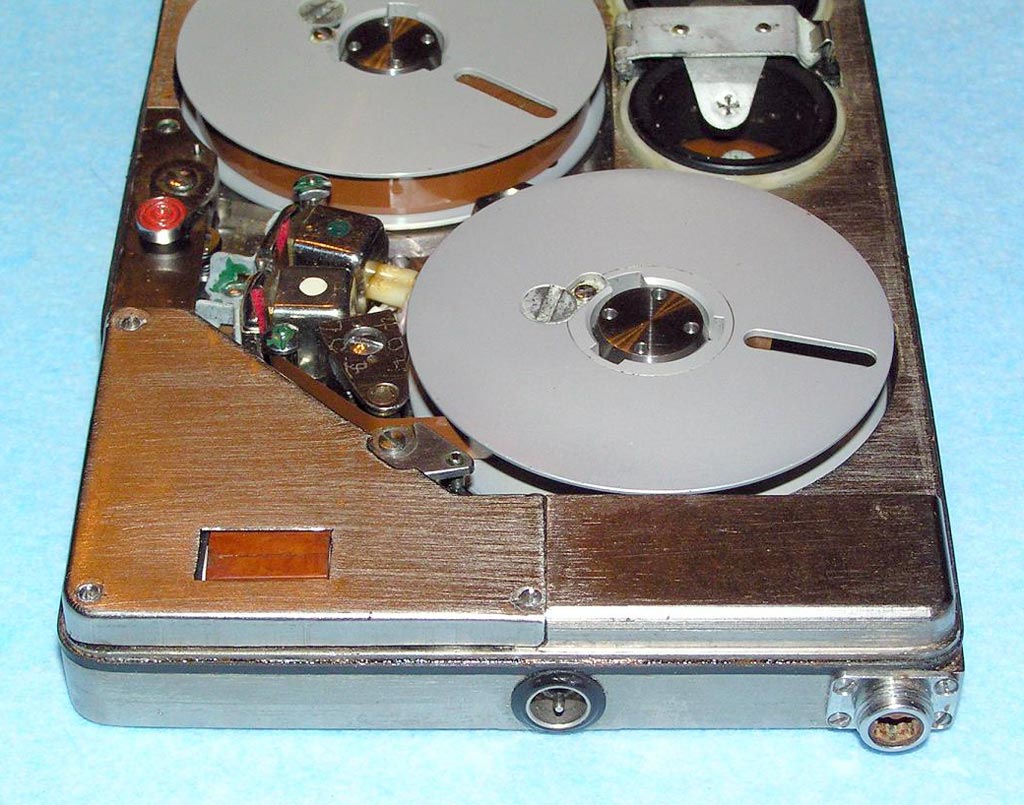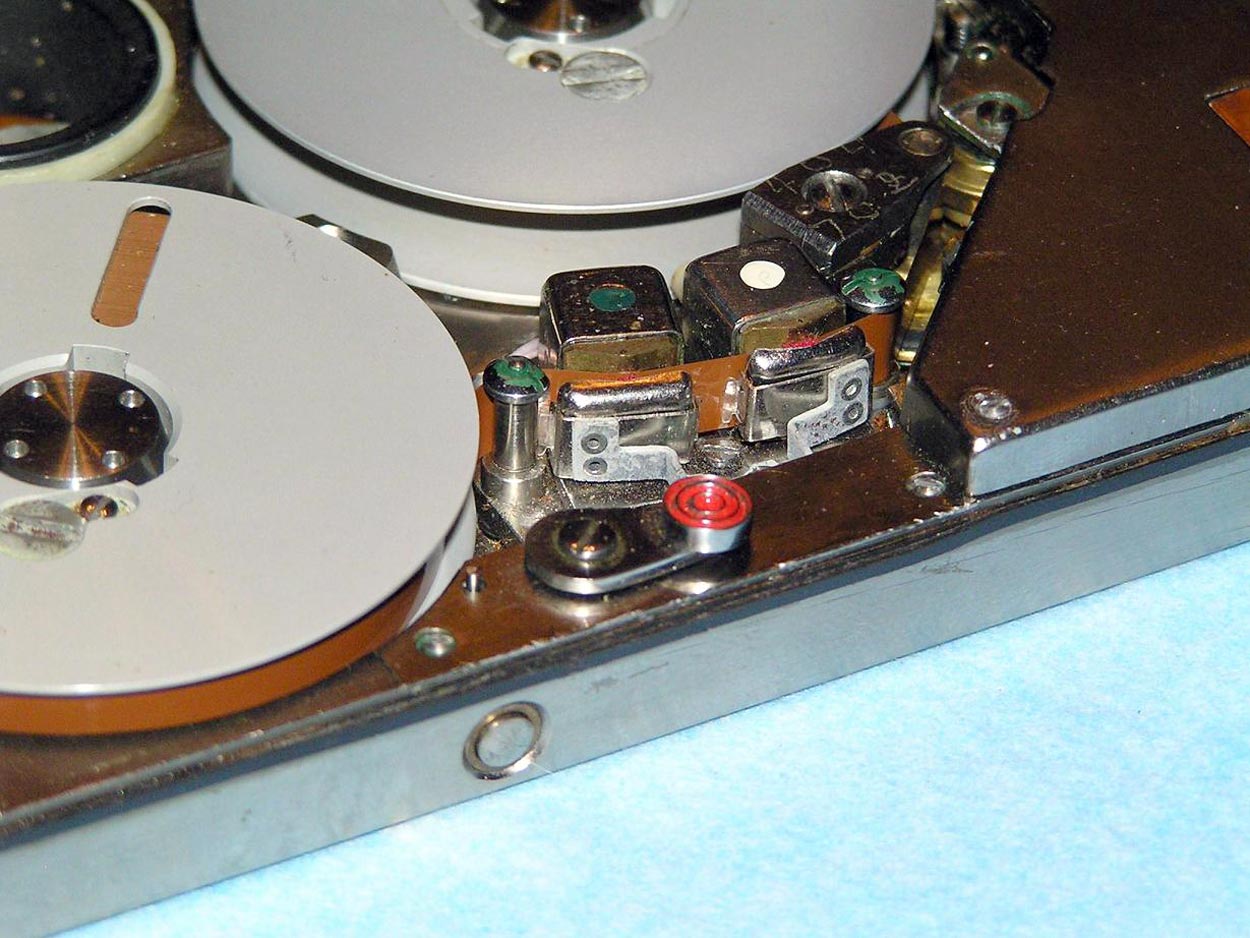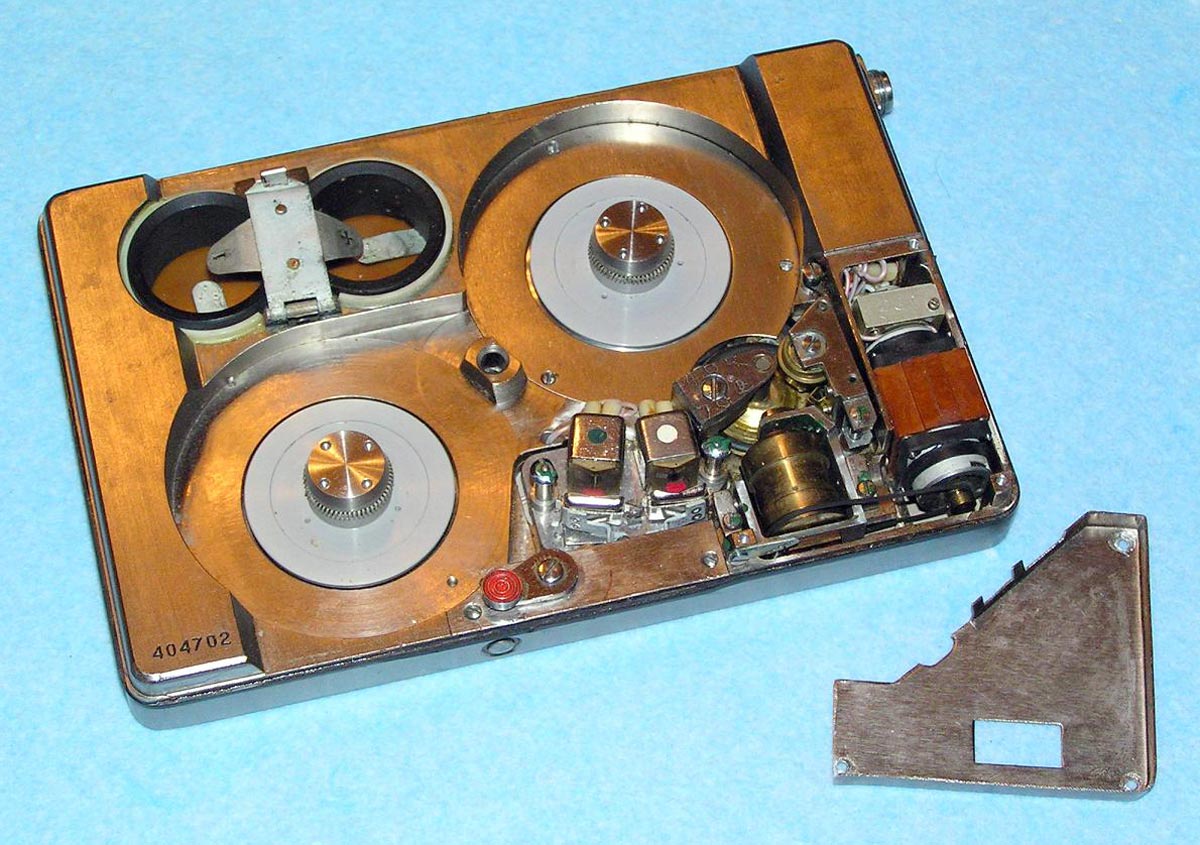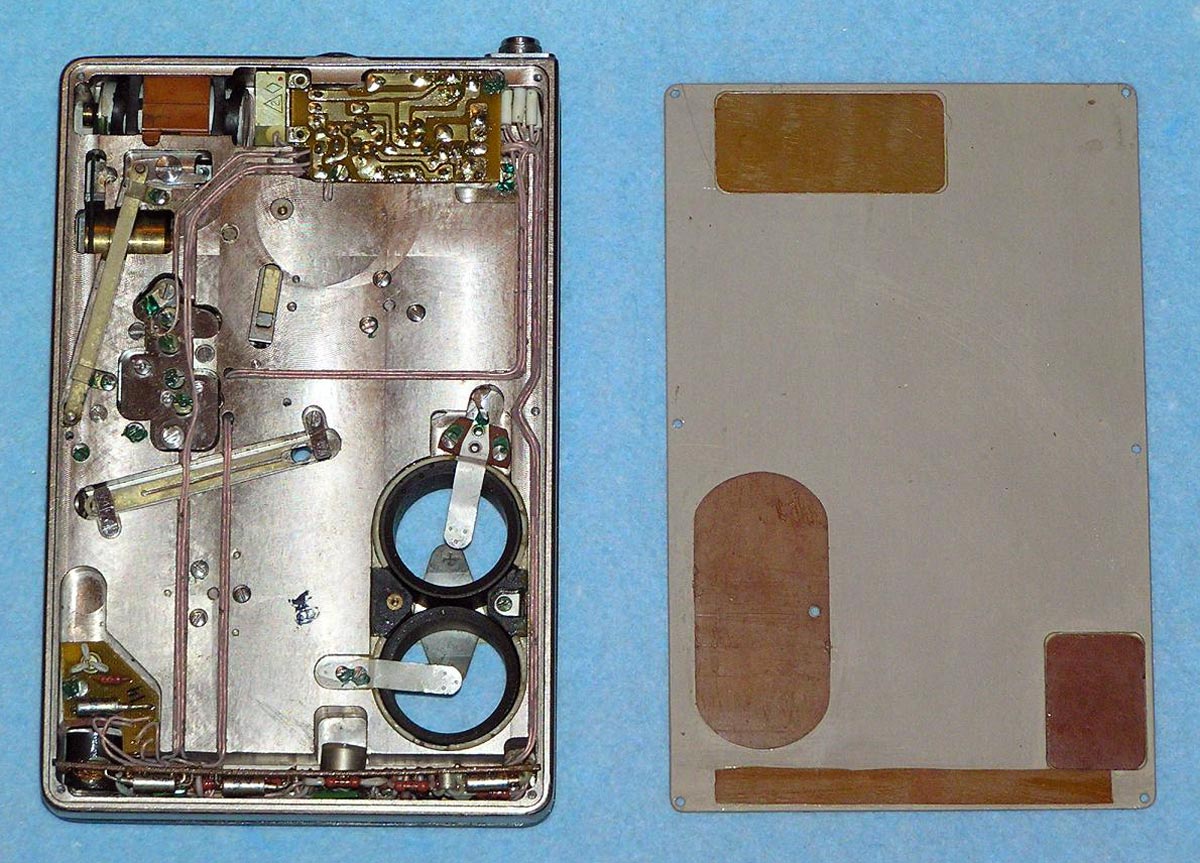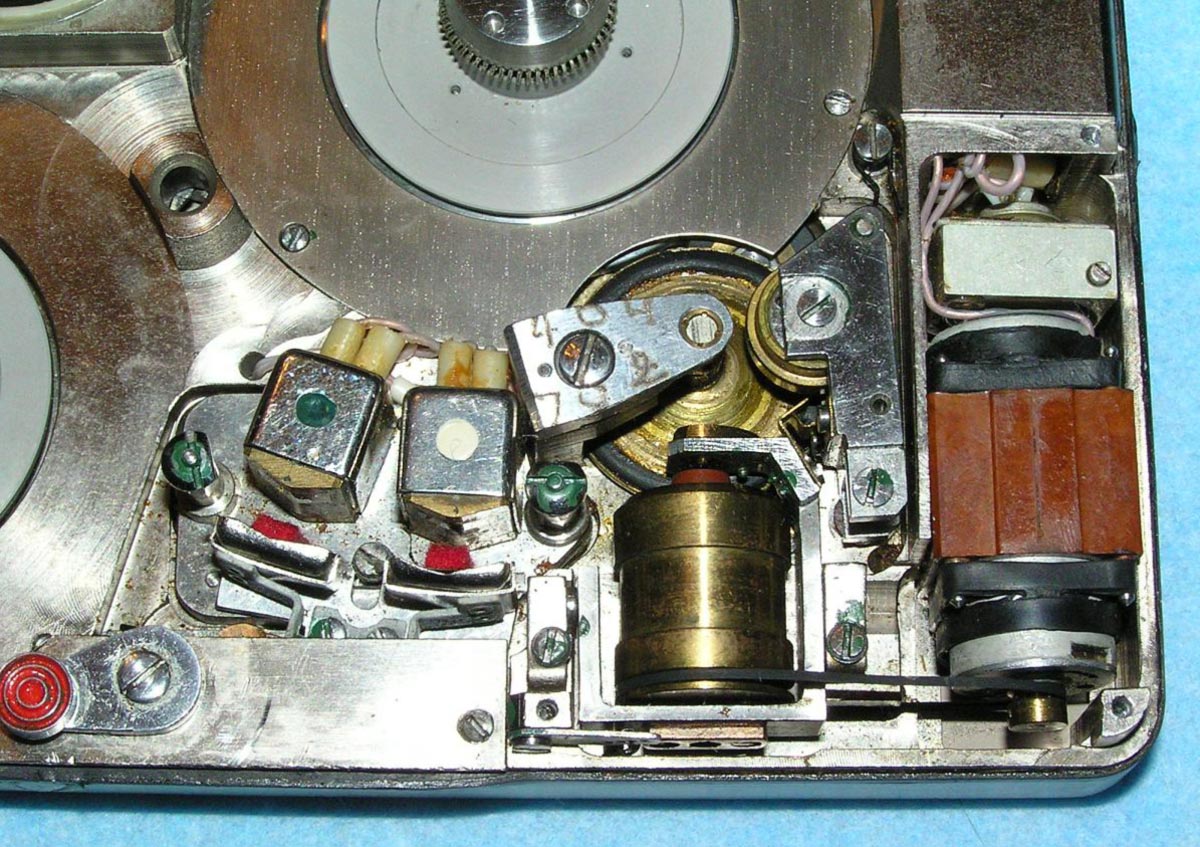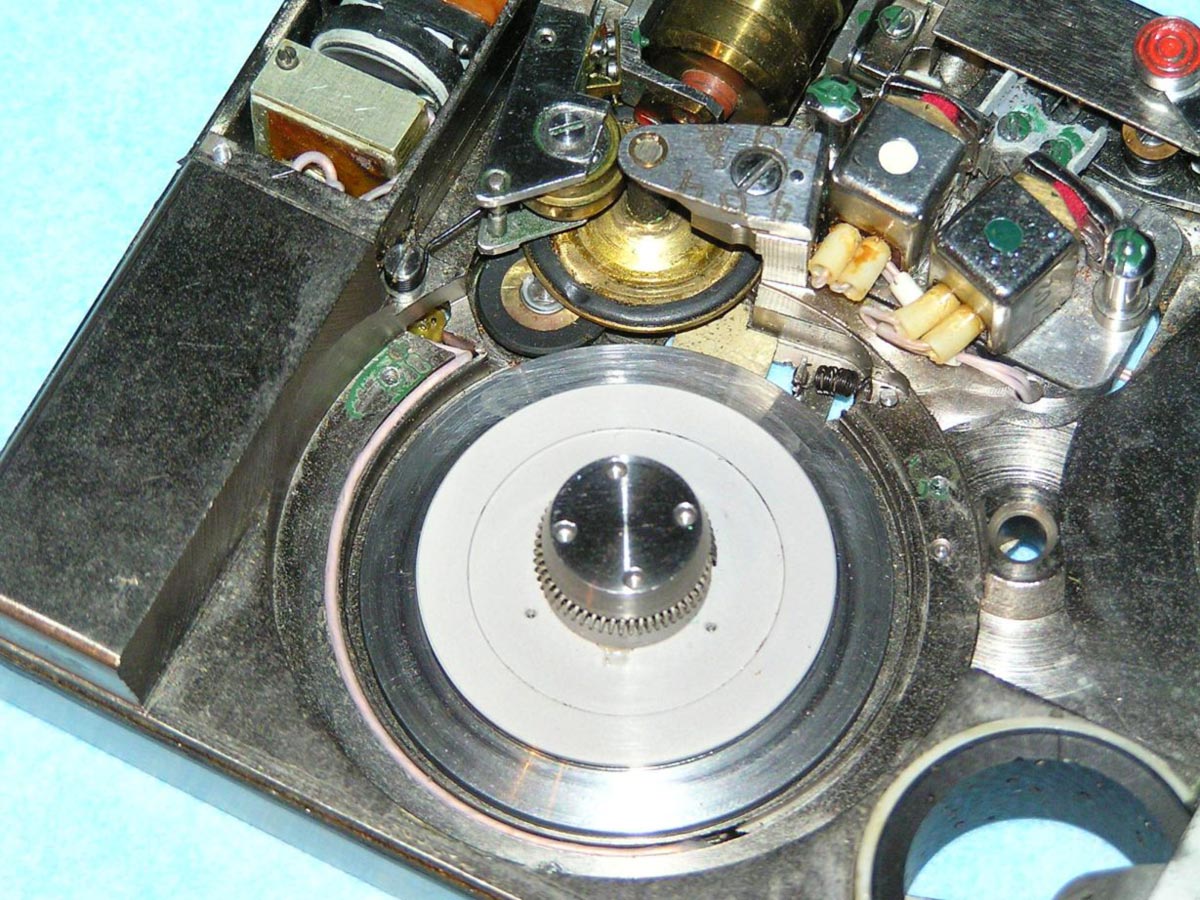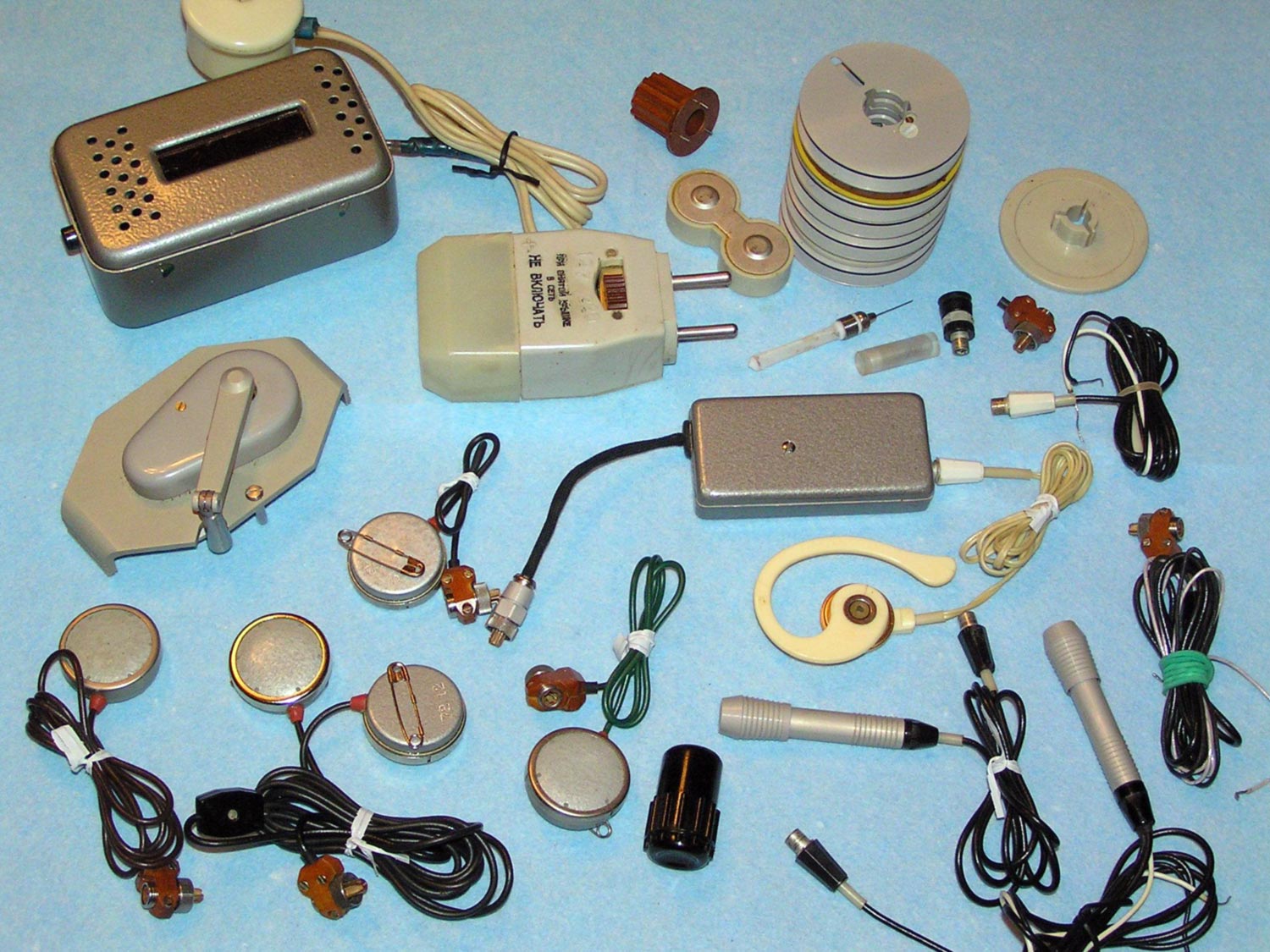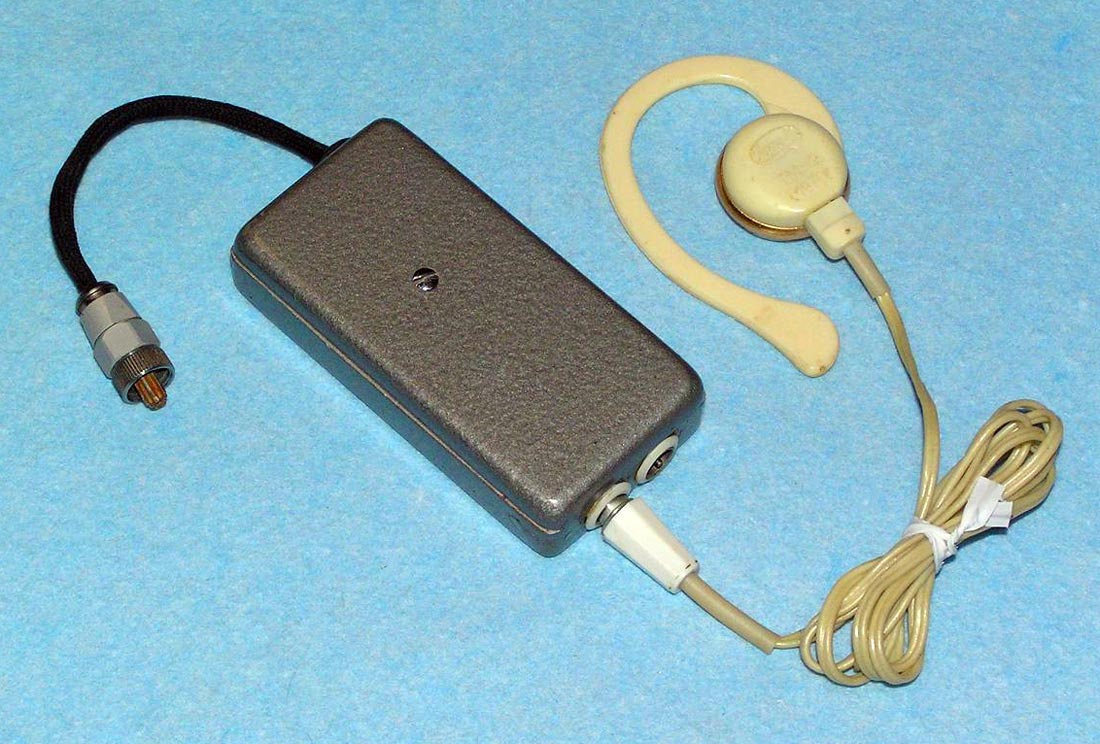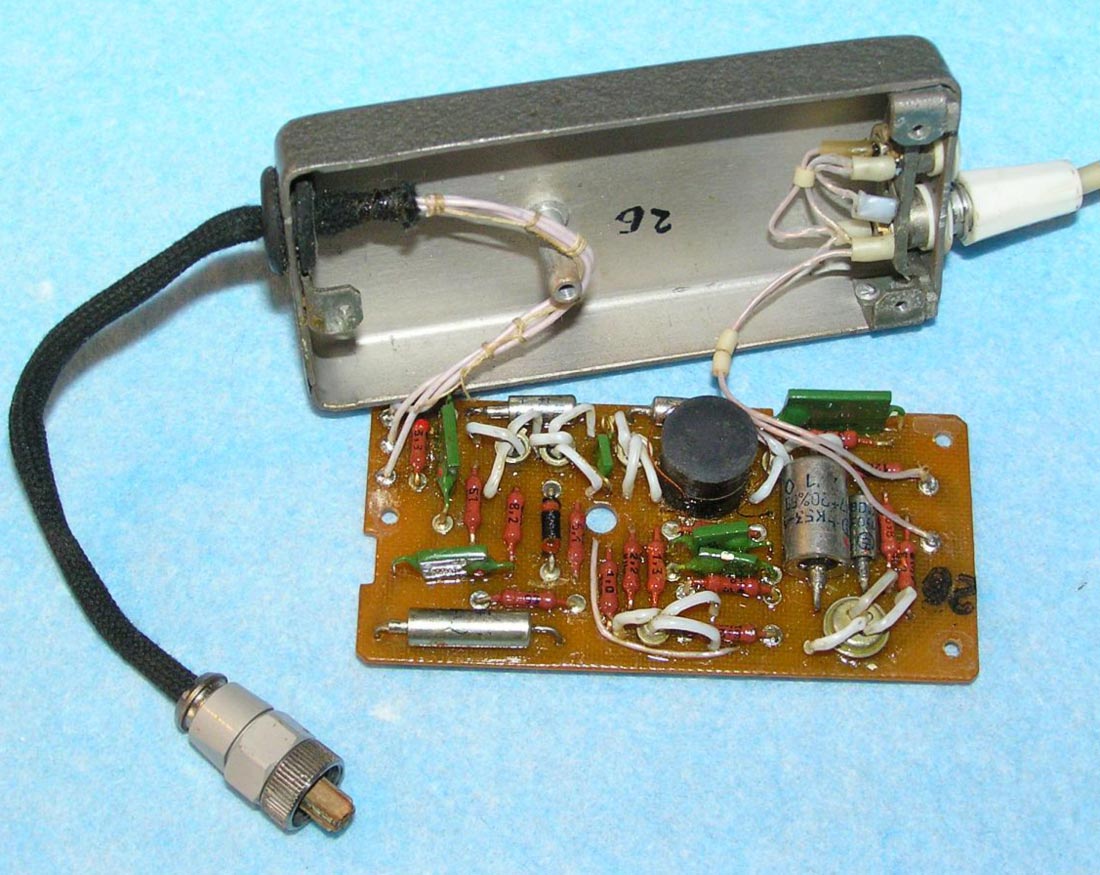Special voice recorder `` Bat ''.
Reel-to-reel tape recorders, portable.Reel-to-reel tape recorders, portableThe special dictaphone "Bat" has been produced by the Kiev Research Institute MARS (formerly named after Manuilsky) since 1971. On the site http://vintage-technics.ru/ from where photos and information the voice recorder is referred to as "Spy", that is, without a name. One of my acquaintances immediately called him "The Bat", since in his youth, or rather in January 1972, he saw such a recorder at work. Maybe not, but let it be The Bat. Here is a description of the author of the site from where the photo and info: The dictaphone has dimensions of 138x90x17 mm and weighs 380 grams. Structurally, the apparatus is made as a military device. Body - the chassis is milled from a solid block of some kind of alloy, possibly titanium. The top and bottom covers are aluminum. The top cover has a round window for visual control of the take-up spool rotation. In the middle of the lid is its latch. To open the lid, press the button on the side. This releases the latch and the cover can be easily removed. The belt speed is stabilized, there is a tonnel and a toner. However, in this design, the rubber cover has a pitch, and not a pitch roller, as is generally accepted. It would be more correct to say that I received this recorder in such a configuration, but that does not mean that it was so. Probably this is the result of repairs, modernization. In the future, I redid everything according to the classic scheme with a tonal shaft without a rubber coating. Only in this form was it possible to achieve an acceptable uniformity of the belt movement. However, I did not redo the photos and the toner roller is rubberized. The miniature engine is located horizontally and the movement from it to the flywheel is transmitted using a belt. Ribbon clamps with felt pads and brass toner roller are brought in by turning a lever with a red round handle. In this case, the conical attachment of the flywheel shaft is pressed against the rubberized roller of the tonal shaft, which is connected to the winding unit through an intermediate rubberized roller. In general, the design looks well thought out and manufactured at a high technological level. The workmanship of all parts, even the most insignificant ones, is very high. There is a hitchhiking. For its operation, one of the guide racks is used, located next to the flywheel. This post is insulated from the body and closed to it with a metal tape glued to both ends of the coil winding. In this case, the control circuit cuts off the power of the device. The recorder uses a standard 6.35 mm wide magnetic tape on metal spools with a diameter of 53 mm. Depending on the thickness of the film, you can make 1 ... 2 hours of recording on a reel (per track). After that, the coils can be turned over, and continue recording on the second track. For fixing the coils on the cassettes there are round coiled springs, and in the coils themselves there are corresponding grooves. The set includes plastic adapters for listening to recordings on an ordinary tape recorder. Rewinding in the recorder is not provided, but for its implementation there is a special attachment device with a reducer. It is put on top of the corresponding reel and rewound is done manually using a rotating handle. In this case, the guide pin of the device is inserted into the hole for the lock of the top cover of the recorder. By rearranging the device as needed, you can quickly rewind the tape in both directions. Also included is a simple rewinder in the form of a plastic handle with three pins at the end. Both heads, universal and washer, are apparently made especially for this model, and have dimensions of 10x10x8.5 mm. The recorder is powered by 4.8 V, it is supplied from 4 batteries of the "DEAC" or D-0.1 type. To use D-0.1 batteries, ebonite adapters of the appropriate diameter are inserted into the battery compartment. Consumption current during recording 35 mA, during playback 40 mA. There are two connectors on the front side of the recorder. One, located in the middle, is intended for connecting a remote switch, and the second for connecting a microphone and an external playback amplifier. The switch connector has a twist lock, and a round five-pin threaded connector is used to connect a microphone and an external amplifier. Removing the bottom cover reveals the internal wiring and electronics boards. Three electronics boards and wiring are located in the milled grooves and voids of the monolithic housing. For wiring, a wire of the MGTF type in fluoroplastic insulation was used. Apparently, next to the connectors there is a circuit board for controlling the recording - playback - auto-stop modes, and a stabilizer for the engine rotation speed. Since there is no mode switch, the control circuit switches modes depending on whether a microphone or an external playback amplifier is connected. On the opposite side of the case are the recording amplifier and erasure generator boards. All boards are covered with a protective varnish. The voice recorder is switched on using a remote switch - a button. The set includes two such switches with wires of different lengths, and one without a wire at all, combined with a connector. To turn on the recorder, press the button, and to turn it off, pull it back. The external playback amplifier is made in the form of an aluminum box measuring 73x36 x 16 mm, weighs 50 grams and is assembled on 6 transistors. It has two parallel output jacks for connecting headphones or external devices. Power is supplied to the amplifier from the recorder, which explains the fact that the current consumption during playback (40 mA) is greater than during recording. Also included is a device for quick demagnetization of the tape (the whole coil at once), a battery charger, an oiler, and miniature pencil cases with spare screws and tape for gluing the tape. There is some metal hitchhiking tape. The microphones are 30x11 mm in size and weigh 25 grams. On their back there are pins for attaching to clothing.